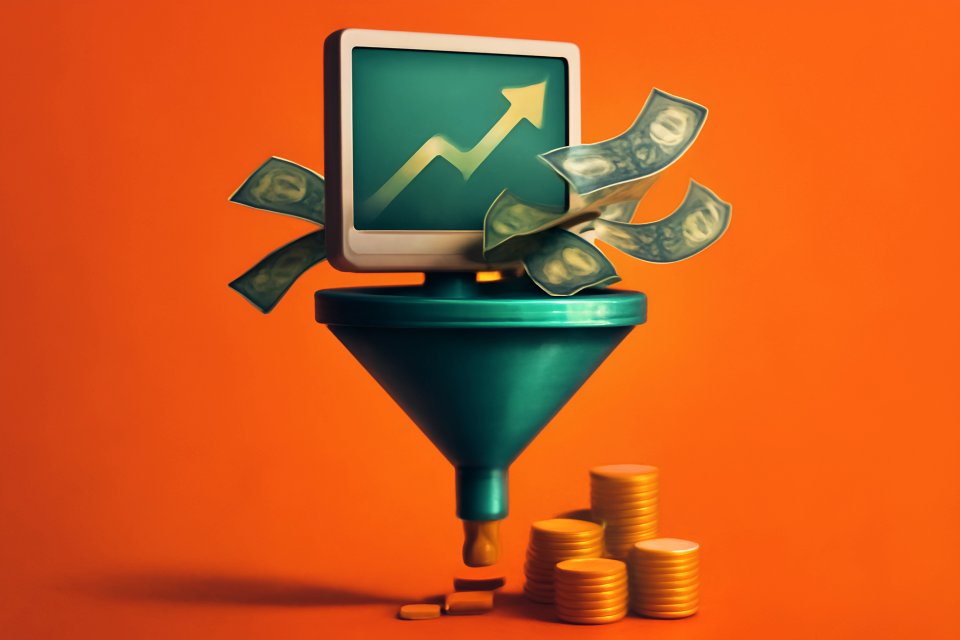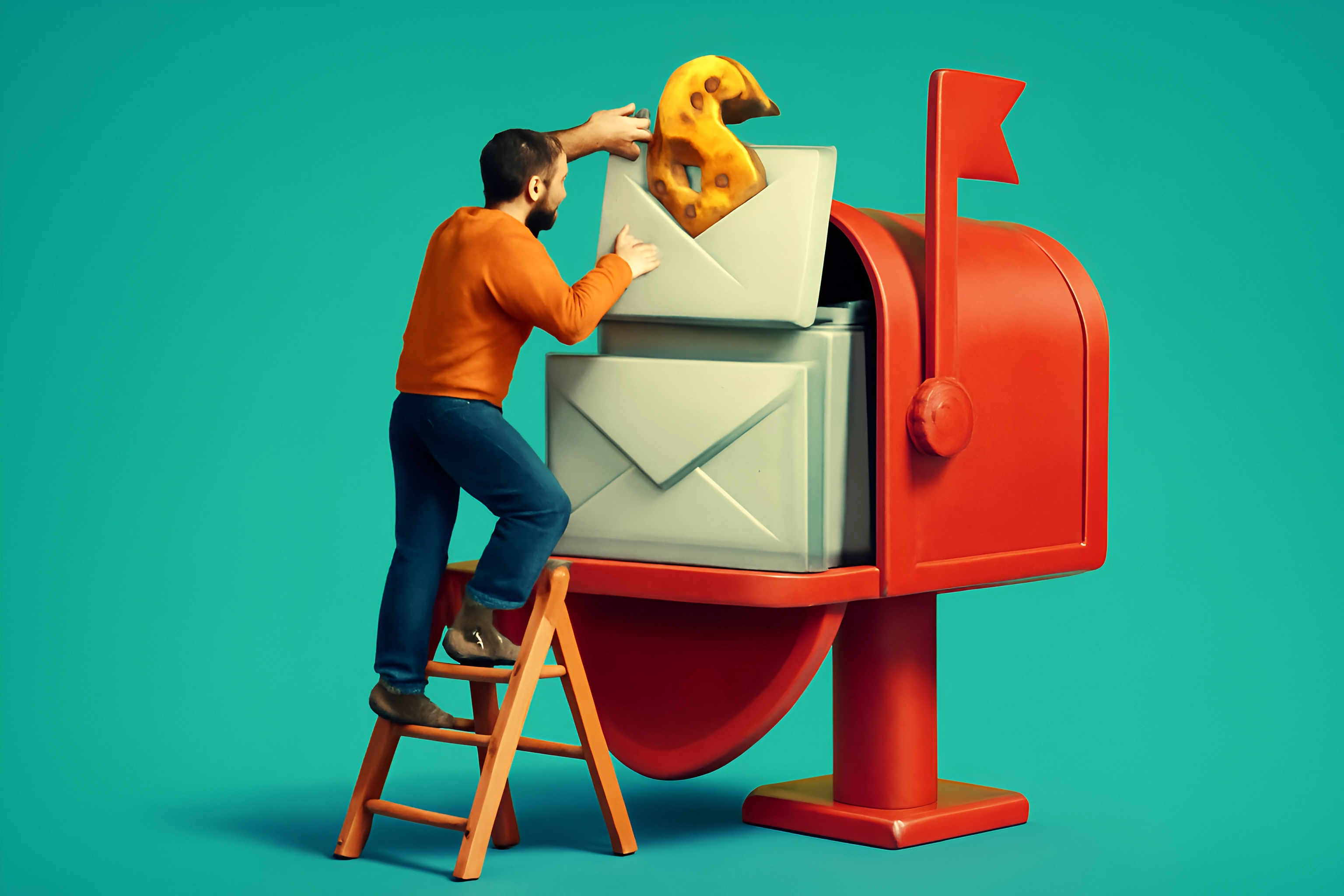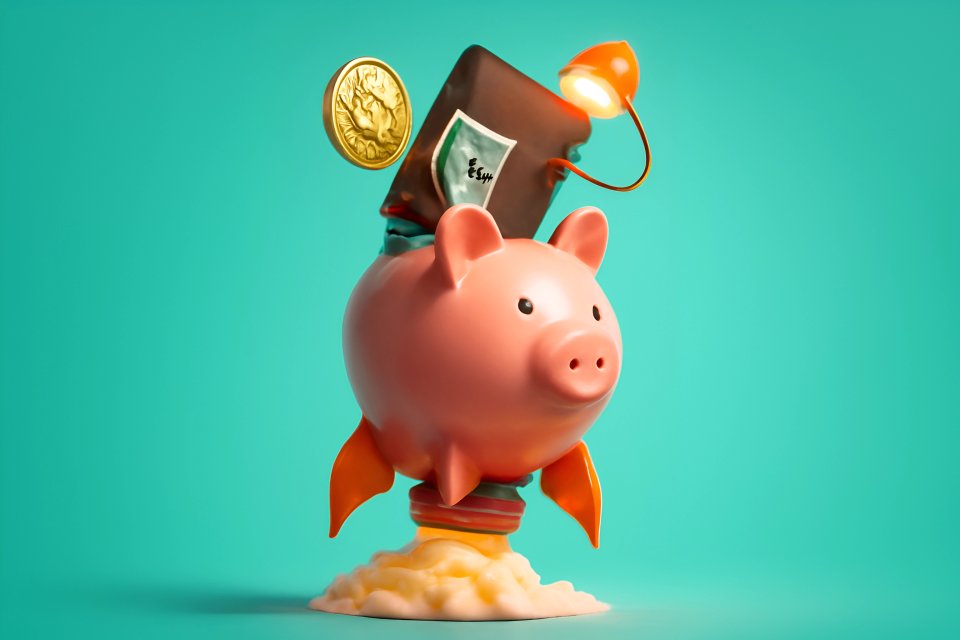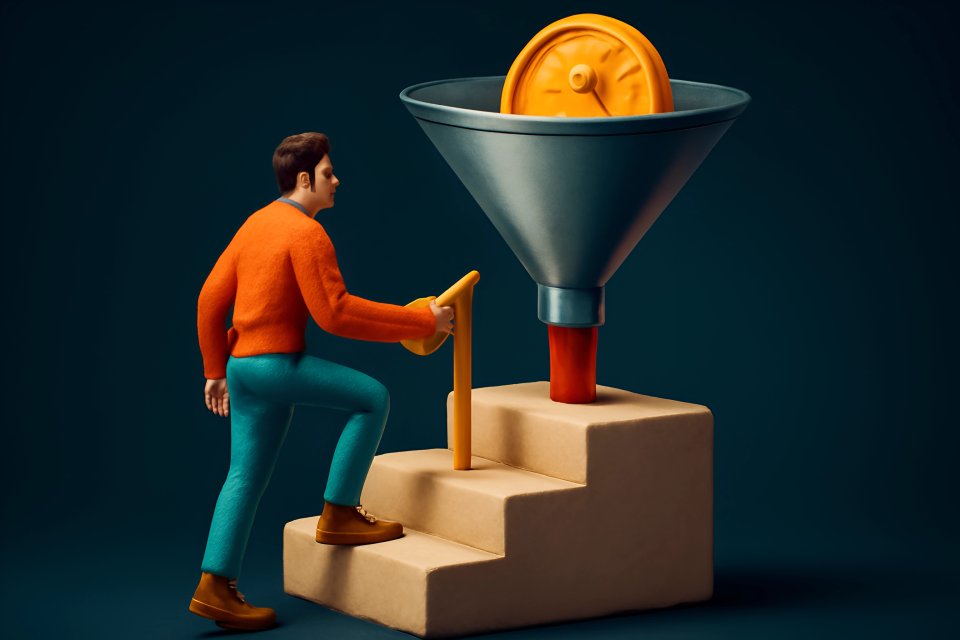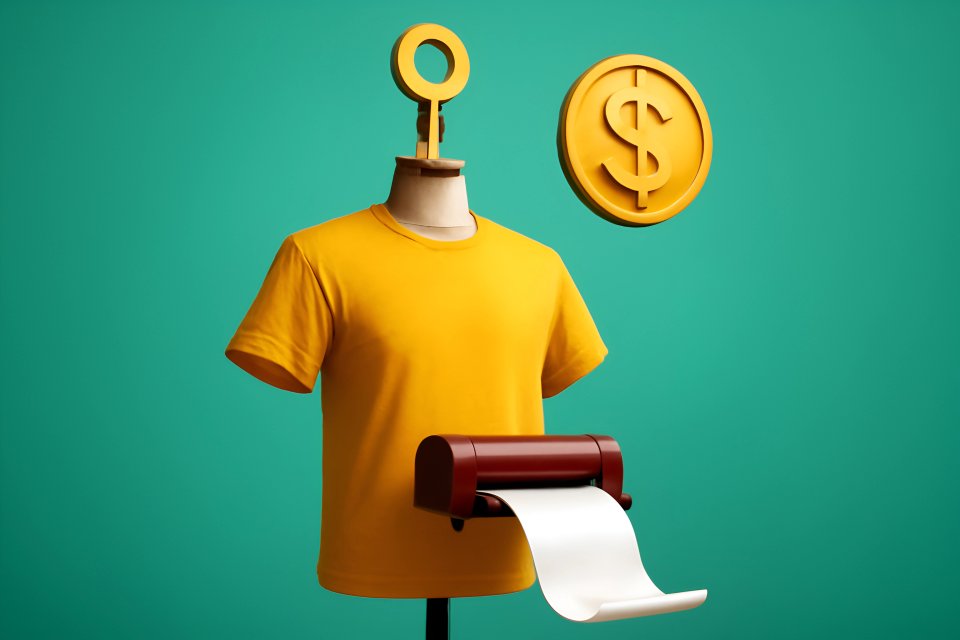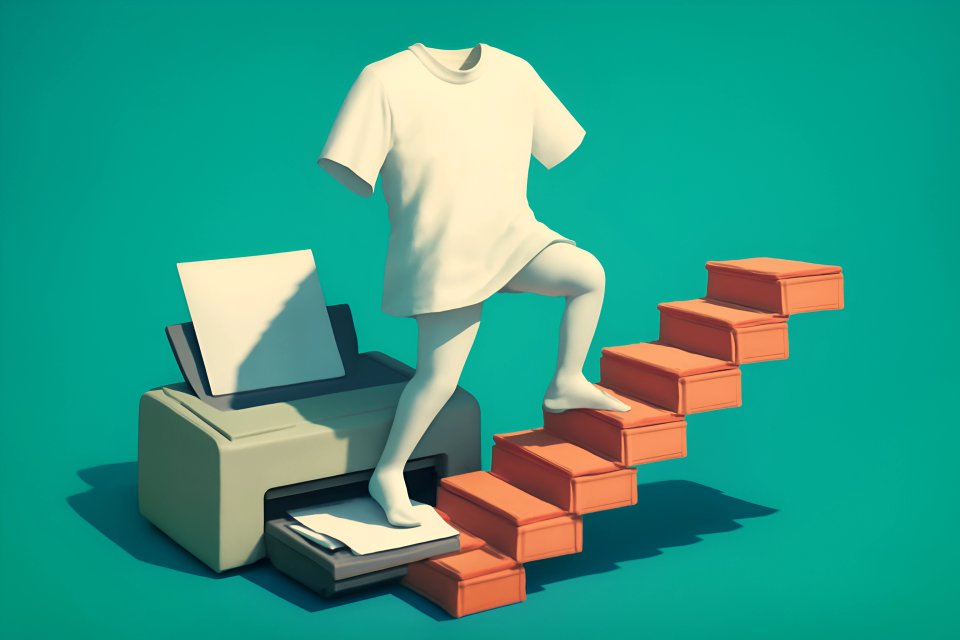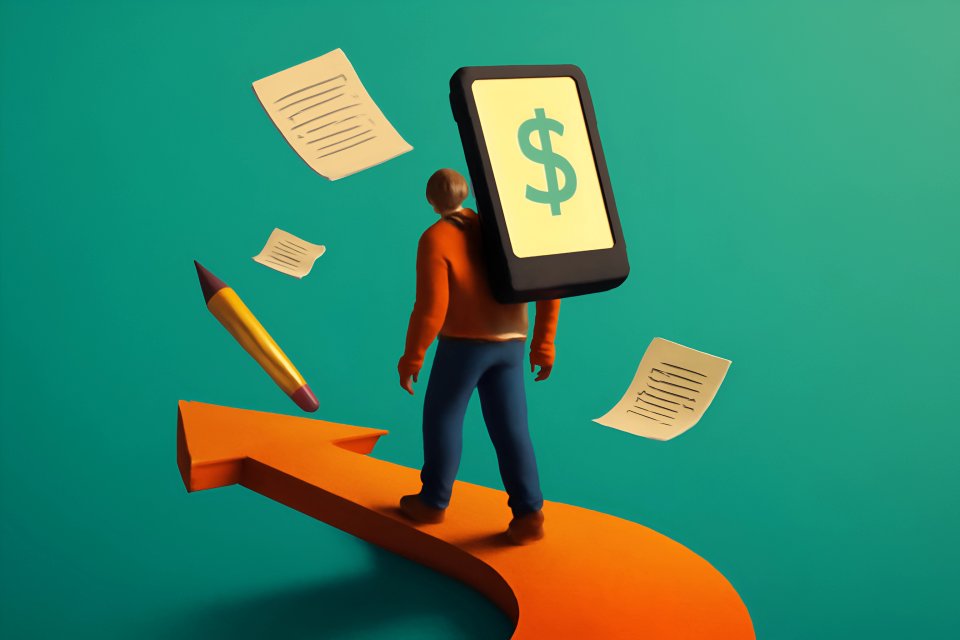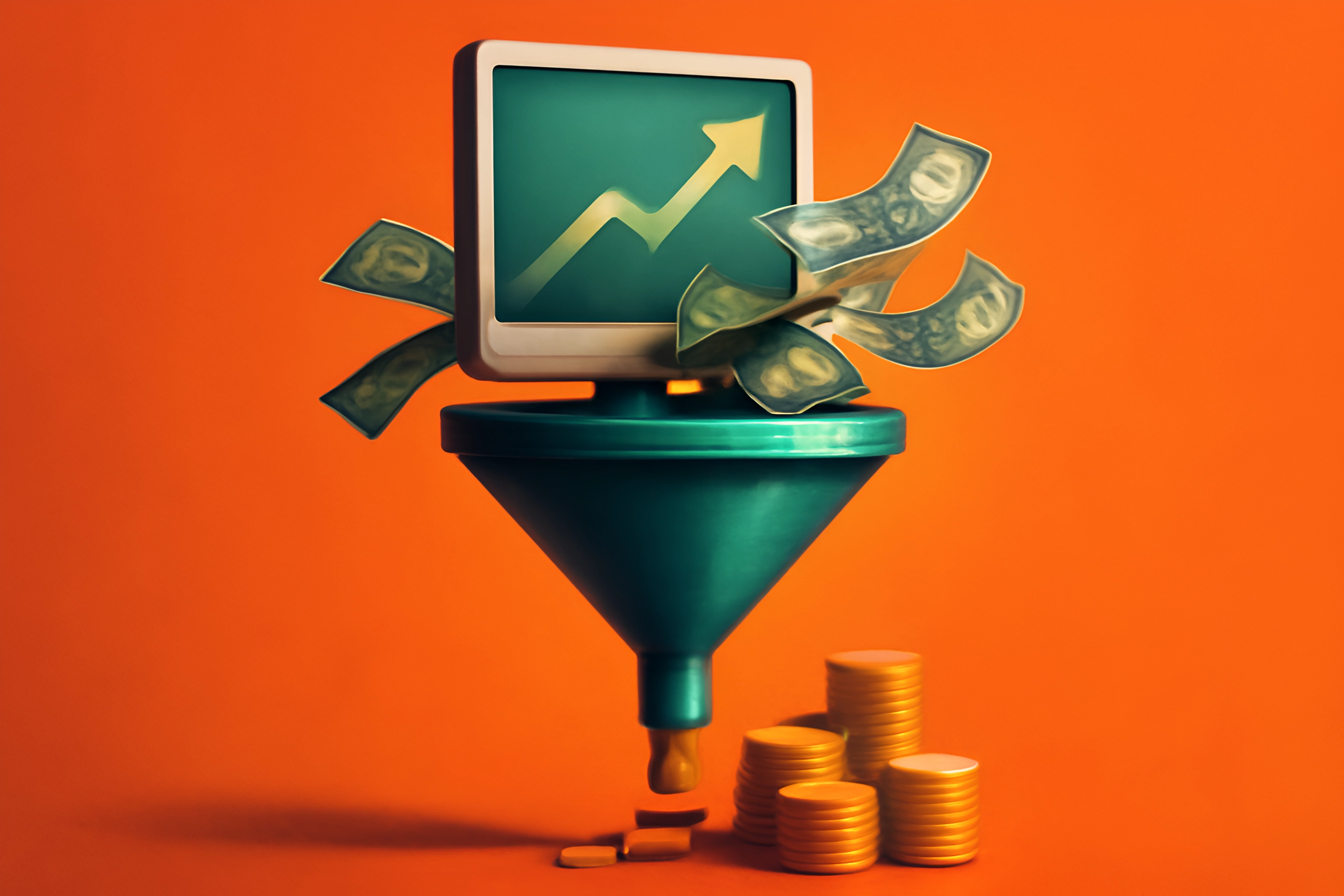
Stop for a moment and picture it. The alert on your phone isn’t another meeting reminder or a social media notification. It’s a commission payment. Another one. And another. They’re arriving while you’re at the gym, out to dinner with your family, or even while you’re sleeping. This isn’t a fantasy; it’s the tangible promise of true passive income, a reality that feels impossibly distant when you’re stuck in the affiliate marketing grind—constantly churning out content, manually dropping links, and hoping for a click.
You’re putting in the work, but your affiliate income is directly tied to the hours you spend promoting. How do you scale without cloning yourself? The answer isn't about working harder, posting more, or finding some magic-bullet product. It’s about working smarter by building a system, an asset that operates on your behalf, 24/7.
This is the power of an automated affiliate funnel. It’s not a gimmick or a shortcut; it’s a sustainable business machine designed to turn your one-time effort into a recurring, predictable stream of revenue. In this blueprint, we’re going to pull back the curtain and show you the exact components of a profitable funnel, a step-by-step guide to building your first one, and the critical metrics you need to watch to ensure it becomes your most valuable asset.
What is an Automated Affiliate Funnel (And Why It’s a Game-Changer for Passive Income)
Let’s cut through the jargon. An affiliate funnel isn't some complex, mystical marketing contraption. It’s simply a strategic path you create to guide a potential customer from initial awareness to a final purchase, all while building trust and providing genuine value along the way. It’s the difference between shouting a recommendation into a crowded room and having a thoughtful, one-on-one conversation that solves a real problem.
Beyond the Link: Deconstructing the "Funnel"
Think of the classic buyer’s journey, which marketing experts often map out to understand customer psychology. A well-structured funnel mirrors this journey, guiding someone from Awareness of a problem to Interest in a solution, then to Desire for a specific product, and finally to Action—the purchase. According to the experts at Billo, a successful funnel strategically uses content like blog posts and videos to map the path a consumer takes through these stages, ensuring you meet them exactly where they are.
This structured approach is fundamentally more powerful than random link placement. Instead of just hoping for a click, you are systematically building a relationship. You are earning the right to make a recommendation by first proving your value and understanding of their needs.
This process transforms you from a simple promoter into a trusted advisor. It’s a psychological shift that dramatically increases the likelihood of a conversion because the final affiliate offer feels less like a sales pitch and more like a logical, helpful next step.
The Magic of "Automation": Your 24/7 Salesperson
Here is where the true freedom lies. The "automation" component is the engine that makes your funnel a passive income machine. It’s the set of digital tools, primarily an email autoresponder, that works tirelessly in the background to nurture leads and present your affiliate offers without you having to lift a finger after the initial setup. Research shows that marketing automation can drive a 14.5% increase in sales productivity, and that’s precisely what we’re building here—a system for peak productivity.
Imagine a new visitor finds your blog post, downloads your free guide, and enters your funnel. Instantly, your automated system kicks in. It delivers the guide, sends a welcome message, and then, over the next several days or weeks, sends a pre-written sequence of emails designed to educate, build rapport, and eventually, introduce your affiliate product as the perfect solution to their problem.
This is your 24/7 salesperson. It never gets tired, never calls in sick, and never forgets to follow up. As GetReditus points out, the goal is to automate affiliate marketing from the first click to the final payout, creating a seamless pipeline that converts leads into commissions while you focus on other things.
The Key Benefits: From Active Hustle to Automated Asset
Building an automated funnel is about fundamentally changing the equation of your business. You are moving away from an active hustle, where your income is capped by your available hours, and toward building an automated asset that generates wealth independently. The benefits are profound and life-changing.
First, you achieve true scalability. An automated system can nurture 100 leads just as easily as it can nurture 10,000. Your income potential is no longer limited by your personal capacity to engage one-on-one. Second, you gain unparalleled time freedom. You invest the effort upfront to build the machine, and then you let it run, freeing you to travel, create, or simply live your life on your own terms.
Most importantly, you are building an audience you own. Unlike social media followers who are subject to the whims of an algorithm, your email list is a direct line of communication to people who have raised their hand and expressed interest in what you have to say. This is the foundation for not just one affiliate offer, but for learning how to monetize your blog with smart affiliate marketing strategies for years to come.
The 5 Core Components of a High-Converting Automated Funnel
Every successful automated funnel is built on five key pillars. Let's break them down. Each piece plays a critical role in creating a seamless and profitable system that turns casual visitors into loyal customers and, ultimately, into passive income for you.
1. The Traffic Source (The Top of the Funnel)
Your funnel is useless without people entering it. But not all traffic is created equal. For a truly passive system, you must focus on evergreen traffic sources—content that continues to attract visitors long after you’ve published it. This is the polar opposite of a fleeting Instagram story or a tweet that gets buried in minutes.
Think of an SEO-optimized blog post that ranks for a valuable keyword in your niche. This single piece of content can act as a permanent gateway to your funnel, attracting new, qualified leads every single day without any additional effort on your part. Other powerful evergreen sources include a well-crafted Pinterest pin that gets continuously re-pinned or a helpful YouTube video that solves a common problem for your audience.
The key is to create a durable asset that serves as the "top of the funnel," consistently feeding your automated system with fresh prospects. This is the first and most crucial step in decoupling your time from your income.
2. The Lead Magnet (The Irresistible Offer)
You can’t just ask for someone’s email address; you have to earn it. The lead magnet is the ethical bribe you offer in exchange for their contact information. It must be something of such high perceived value that your ideal customer can't resist signing up for it. This is your first opportunity to prove your worth and begin building trust.
A great lead magnet solves a specific, urgent problem for your audience. Examples include a detailed checklist, a short e-book, a curated resource guide, a free email course, or a webinar replay. As the team at ClickFunnels explains, a winning affiliate marketing sales funnel often hinges on a lead magnet that filters for highly interested prospects by offering a solution to a pressing need.
Forget generic "sign up for my newsletter" pleas. Your lead magnet must be a targeted, irresistible offer that makes your visitor think, "This was made for me." This simple exchange is the transaction that officially brings a person into your automated world.
3. The Landing Page (The Conversion Hub)
The landing page is where the transaction for the lead magnet happens. It is a simple, distraction-free web page with one single, solitary goal: to convince the visitor to enter their email address in exchange for your lead magnet. There are no navigation menus, no links to other blog posts, and no social media icons.
This page is your conversion hub, and its design is rooted in psychology. A compelling headline grabs their attention, a few benefit-oriented bullet points create desire, and a clear call-to-action button tells them exactly what to do next. According to Deadline Funnel, using dedicated landing pages is a critical part of a successful funnel because it eliminates distractions and focuses the user on the one action you want them to take.
A well-designed landing page can be the difference between a 5% conversion rate and a 40% conversion rate. It’s a small but mighty component of your funnel that has a massive impact on your overall success.
4. The Email Autoresponder (The Automation Engine)
This is the heart of your entire automated system. An email autoresponder is the software that stores your email list and, more importantly, automatically sends your pre-written email sequences to new subscribers. This is the technology that allows you to build a relationship and make sales on autopilot.
Platforms like ConvertKit, MailerLite, and ActiveCampaign are the engines that power modern affiliate funnels. Once you set up your sequence of emails, the software takes over. When someone signs up on your landing page, the autoresponder is triggered, and it begins sending your emails at the intervals you’ve specified—one immediately, the next a day later, and so on.
This is the "set it and forget it" component that delivers true time freedom. You can find a complete breakdown of these platforms in our guide to the essential digital tools for solopreneurs to help you choose the right one for your needs.
5. The Value-Driven Email Sequence (The Nurturing Bridge)
This is where you separate yourself from the hype-driven marketers. Your email sequence is not just a series of sales pitches. It is a nurturing bridge built on a foundation of pure, unadulterated value. The goal is to build trust and establish authority long before you ever ask for the sale.
A simple but highly effective sequence follows this structure:
Email 1:Welcome & Lead Magnet Delivery. Immediately deliver on your promise.Email 2-3:Pure Value. Teach them something new. Solve another small problem. Share a personal story. Give, give, give.Email 4:Value with a Soft Pitch. Introduce the larger problem that your affiliate product solves and subtly mention it as the ultimate solution.Email 5:Direct Pitch & Urgency. Clearly articulate the benefits of the affiliate product and explain why it’s the perfect choice for them right now.
This approach, which focuses on post-conversion nurturing to maximize lead conversion, ensures that when you do make an offer, your audience is receptive and trusts your recommendation.
Your Step-by-Step Blueprint to Building Your First Automated Affiliate Funnel
Ready to build? Here’s a realistic, step-by-step plan to get your first funnel up and running. This isn't about theory; it's about taking decisive action to create an asset that will pay you back for years to come. Follow these steps, and you'll have a working system in place.
Step 1: Choose a High-Value Affiliate Product in Your Niche
Your entire funnel is built to promote a single, core offer. Choose it wisely. The best products are ones you genuinely use, believe in, and that solve a significant, painful problem for your target audience. Authenticity is your greatest sales tool.
Don't just chase high commission rates. A product that truly helps people will always convert better than a mediocre one with a big payout. Once you have your offer, you can begin to optimize your affiliate funnel for niche high-value products to ensure you're attracting the right buyers who are willing to invest in a real solution.
Your conviction in the product will shine through in your copy and build the trust necessary for someone to make a purchase based on your recommendation. In fact, 81% of brands rely on affiliate programs, meaning there are countless high-quality products out there waiting for a dedicated partner like you.
Step 2: Reverse-Engineer a Problem to Create Your Lead Magnet
Now, look at your chosen affiliate product. What is the first step someone needs to take before they are ready to buy it? What smaller problem does your lead magnet need to solve to prepare them for the main solution? This is how you reverse-engineer a perfect lead magnet.
For example, if your affiliate product is a powerful project management tool like Asana, a new user might feel overwhelmed. Your lead magnet could be a "5-Day Productivity Kickstart Checklist" that helps them organize their tasks and understand the need for a better system. This pre-frames the problem that your affiliate product solves perfectly.
This strategy ensures your lead magnet attracts highly qualified leads who are already on the path toward your affiliate offer. It’s a seamless transition from a free, valuable resource to a paid, comprehensive solution.
Step 3: Build Your Landing Page and Write Your Email Sequence
With your lead magnet created, it's time to build the infrastructure. Use a simple landing page builder to create your conversion hub. Write a headline that screams the primary benefit of your lead magnet. Then, write your 5-part email sequence, focusing heavily on providing value in the first few emails.
When you write your copy, always focus on the benefits, not the features. Don't tell them the checklist has 20 items; tell them it will save them 5 hours this week. Don't say the software has a calendar integration; tell them they'll never miss an important deadline again. For a more detailed walkthrough, our step-by-step guide to affiliate marketing funnels for beginners is the perfect companion.
This is the most intensive part of the process, but remember: you are doing this work once. The copy you write today will be working for you automatically for months or even years.
Step 4: Set Up the Automation in Your Email Marketing Tool
This is the technical connection that brings your funnel to life. Inside your chosen email marketing platform (like ConvertKit or MailerLite), you will create a new "automation" or "sequence." You'll set a trigger: When a subscriber joins via the landing page form.
Then, you will add each of your five pre-written emails to the sequence, setting the delay between each one. Email 1 goes out immediately. Email 2 is delayed by one day. Email 3 is delayed by another day, and so on.
Once you hit "publish" on this automation, the system is live. Every new person who signs up will now be automatically guided through your perfectly crafted nurturing sequence.
Step 5: Drive Evergreen Traffic and Let the System Work
Your funnel is built. The engine is running. Now, you just need to add fuel. Your final step is to create that one key piece of evergreen content—a blog post, a YouTube video, a Pinterest guide—that will consistently attract your ideal customer and direct them to your landing page.
This piece of content should be your absolute best work. It should solve a related problem and naturally lead into your lead magnet as the next logical step. To see how this works in the real world, check out our affiliate marketing case study of a successful campaign to see these principles in action.
Once this content is published and starts to gain traction, your job is done. The system takes over. The content attracts visitors, the landing page converts them into leads, and the email sequence nurtures them into customers.
Essential Tools for Your Affiliate Funnel Automation Stack
While the strategy is paramount, you need the right technology to execute it. Your automation stack doesn't need to be complicated or expensive, especially when you're starting out. Here are the core categories of tools you'll need to build a high-performing affiliate funnel.
Landing Page Builders
Your landing page needs to be simple, fast, and focused on conversion. You don't need a full website builder for this. Dedicated tools like Leadpages are industry-standard for creating high-converting pages with proven templates. For ultimate simplicity and affordability, a tool like Carrd can get a beautiful, effective page online in minutes. Many email providers, including ConvertKit and MailerLite, also have excellent built-in landing page features that are perfect for getting started.
Email Marketing & Automation Platforms
This is the most important tool in your stack. It's the engine of your entire operation. For creators, ConvertKit is a top choice due to its user-friendly interface and powerful, easy-to-understand automation rules. For beginners on a budget, MailerLite offers an excellent free plan that includes automation features. As you grow and your needs become more complex, a platform like ActiveCampaign provides incredibly robust automation and CRM capabilities for serious scaling. You can explore more options in our deep dive on proven digital tools to boost productivity.
Analytics & Tracking
You can't optimize what you don't measure. At a minimum, you need two simple tools to track your funnel's performance. Google Analytics should be installed on your landing page to monitor traffic sources and visitor behavior. Secondly, your affiliate program's built-in dashboard is crucial for tracking clicks, conversions, and commissions. This data is the key to understanding what's working and where you have opportunities for improvement.
How to Optimize Your Funnel for True Passive Income
Building the funnel is the first step. Optimizing it is how you maximize your earnings. A few small tweaks, guided by data, can lead to a massive increase in your passive income. Don't just set it and forget it forever; check in on your metrics and continuously look for ways to improve.
Key Metrics to Watch
Data tells a story. You need to learn how to read it. Focus on these four key performance indicators (KPIs) to understand the health of your funnel and identify bottlenecks.
Here are the core metrics and ambitious but achievable goals to aim for:
| Metric | Description | Industry Goal |
|---|---|---|
| Landing Page Conversion Rate | The percentage of visitors who sign up for your lead magnet. | 20%+ |
| Email Open Rate | The percentage of subscribers who open your emails. | 30%+ |
| Email Click-Through Rate (CTR) | The percentage of openers who click a link in your email. | 3-5%+ |
| Affiliate Conversion Rate | The percentage of clicks on your affiliate link that result in a sale. | 1-10% (Varies) |
By tracking these numbers, you can pinpoint exactly where your funnel is leaking. Low landing page conversions? Your offer or headline needs work. Low open rates? Your subject lines aren't compelling enough. Our guide on leveraging data-driven insights to boost your affiliate marketing ROI provides a deeper dive into this process.
Simple A/B Tests to Run
A/B testing, or split testing, is the process of comparing two versions of something to see which one performs better. It’s the scientific method of optimization. You don't have to guess what works; you can prove it with data.
Start with simple but high-impact tests. Test two different headlines on your landing page to see which one achieves a higher conversion rate. Test two different subject lines for your most important emails to see which one gets more opens. You can even test the placement of your affiliate link within your email sequence—does it perform better in Email 4 or Email 5?
Even a small improvement, like increasing your landing page conversion rate from 15% to 20%, can have a dramatic effect on your bottom line over time. These innovative affiliate marketing techniques are what separate amateur affiliates from professional earners.
Conclusion
The gap between the affiliate marketing "grind" and a life of genuine financial freedom is a bridge called "systems." An automated affiliate funnel is that system. It’s the strategic blueprint for turning your expertise into an asset that works for you, not because of you. It’s the conscious decision to stop trading your precious time for dollars and start building a machine that generates income on autopilot. This is how you work smarter, not harder.
This is not a lottery ticket. It's a learnable skill, a tangible process that you now have the blueprint for. Financial freedom isn't about luck or secret formulas; it's about building intelligent systems that create value at scale. You have the roadmap. The only thing left is to take the first step.
Feeling overwhelmed? We’ve got your back. Download our free Automated Funnel Launch Checklist to guide you through every step and ensure you don't miss a single crucial detail.
What niche are you in? Share the first affiliate product you're thinking of building a funnel for in the comments below
